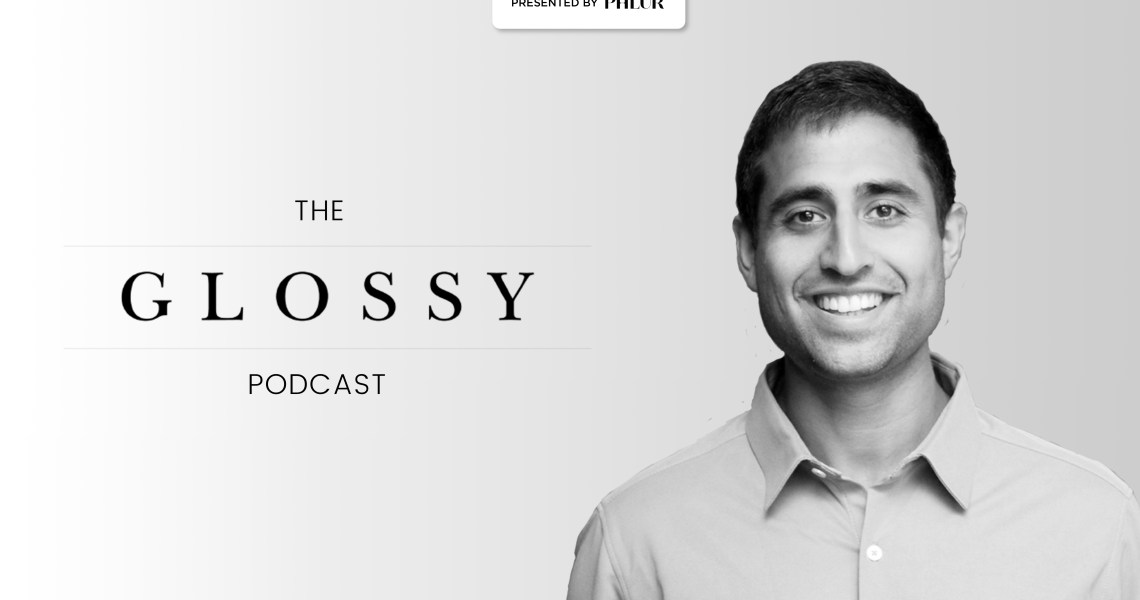Subscribe: iTunes | Stitcher | Google Play |Spotify
Before Aman Advani was the co-founder and CEO of performance-infused businesswear brand Ministry of Supply, he was a consultant.
Spending most of his days on a plane, in a boardroom or traveling from one hotel to the next, Advani was exhausted by the upkeep his formal workwear required, including lots of ironing and frequent trips to the dry cleaners. He decided he needed to find a way to make these clothes work for his life.
“There was this need building up to get rid of all of these burdensome, stiff, stuffy clothes, and the dry cleaners, irons,” said Advani. “So I would quietly sew the soles of running socks into my dress socks, as this tiny little edge to take the performance of the gym and comfort of those socks, and build it into my everyday wardrobe. Then I go to MIT in 2011 and meet my partner, Gihan, and he happens to be doing the same thing to dress shirts. All of a sudden, there’s something bigger here: this idea of bringing together technology and fashion. The idea of form and function coexisting is so big and so important, and the question was: How do we make it the next wave of what happens in fashion? That’s why we started the company.”
So in 2012, Advani co-founded Ministry of Supply with Gihan Amarasiriwardena. Since, the brand has expanded its offering to include both men and women, opened a total of six stores around the U.S., and launched wholesale partnerships with companies like Stitch Fix and MoMA.
In this week’s episode of The Glossy Podcast, Hilary Milnes sits down with Advani to discuss why Ministry of Supply has such a strong emphasis on education, what makes fashion an emotional industry and what’s on the horizon for performance wear. Edited highlights below.
Ad position: web_incontent_pos1
Using storytelling to stand out
“Our company is called Ministry of Supply, named after Q from the Bond films. The premise of the whole thing is that Q, who in real life was Charles Fraser-Smith, operated under the cover of Ministry of Supply. Q makes Bond look great, but ready for absolutely anything, and that’s the company’s premise. What is the problem? What does Bond need? What does our customer need in a given day? So our goal as a company is very much in quantified empathy: What do you need, and how can we actually put that into our process? As that relates to education, that becomes critical. How did we actually solve a problem? How did we create a new opportunity for you? That becomes much more important than us talking about the percentage of spandex in a garment. That’s irrelevant, compared to, ‘What does this unlock for you, how, and if you care, why?’ That way, we can let the customer peel that onion back and understand the layers behind it. Education is by far the most important thing for our customers.”
Fashion is inherently emotional
“Clothing is ultimately such an emotional business. We as engineers approach it so rationally, and we think so much about things like quantified empathy. What a weird thing to say, when it comes to fashion. What we find, and the reason that we have six stores across the U.S. and encourage people to go visit them, is that none of that matters once you touch and feel it. Once you put it on and you do the stretch test, and you walk around in it for a second, you get surprised that it’s all machine-washable. Once you see it with your own eyes, and feel it with your own hands, price point, versatility and all these other things become secondary to whether you like it and feel good in it. Then we can start to talk about the technology, versatility, fashion or any other layer that you care about, like sustainability. All of that is secondary to, ‘Do I like it? Does it feel good?'”
The future of technical fabric
“From the start, we talked about this phrase, ‘The new normal.’ For us, we see so many brands following suit in just a tiny, little way: ‘We’ve put 2% spandex into X lines that we make.’ It’s 1% of their suits, and it’s 1% of that suit. We are so deadly convinced that this is the new normal. We are so sure that in five to 10 years, you will find it impossible to go to a store and find anything that is lacking at some level of performance. We, as a culture, have this casualization of our wear-to-work wardrobe that allows for the boardroom-to-bar to exist. Because of that casualization of what we wear to work, the demand for versatility and the fact that we’ve been trained by athleisure to think comfort-first or comfort equal to fashion, this absolutely will be the new normal. We’re so sure, our ask to the industry is to jump in headfirst. Don’t just make [performance features] in this one line, one product, one SKU or 1% [of the products you make], but actually go in headfirst.”




